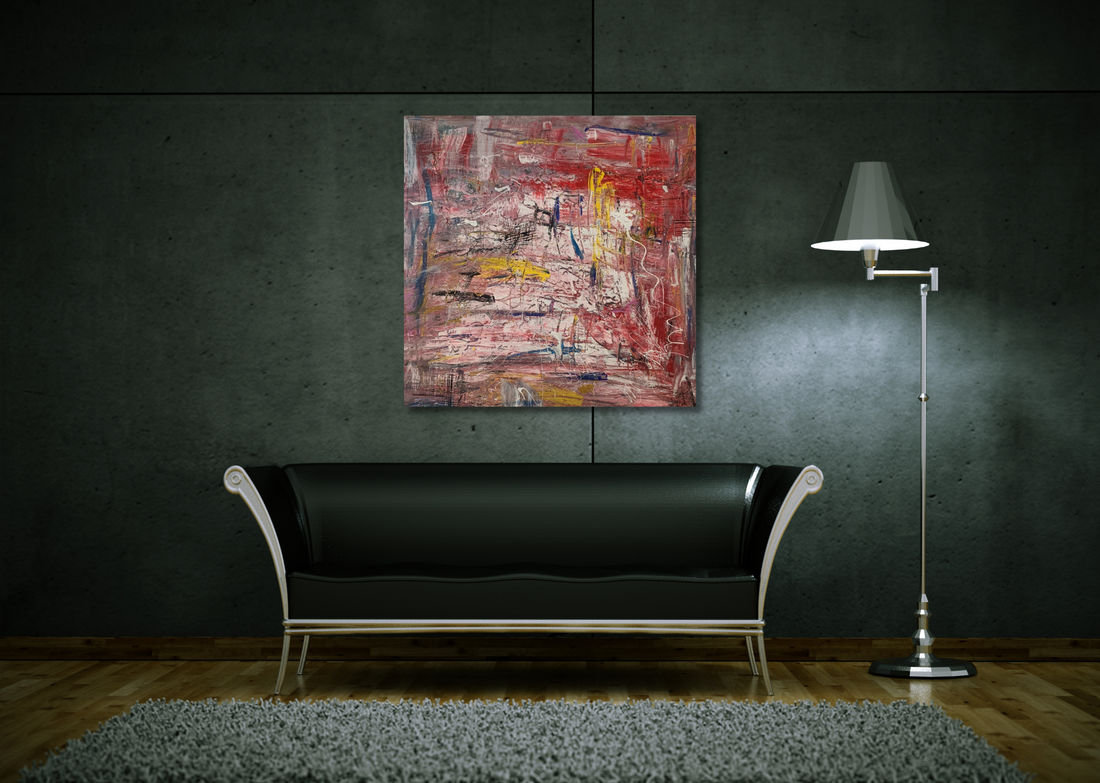
Is the abstract art market the next to BOOM?
Share
The art market is anything but small. In 2020, the global art market was valued at approximately $50.1 billion, according to Art Basel and UBS's Art Market Report. This vast market showcases the diversity and financial potential of artworks, including abstract pieces.
How do I choose abstract art?
Choosing abstract art can be a deeply personal and rewarding experience. It begins with understanding your preferences. Consider the emotions and feelings you want the artwork to evoke. Do you prefer vibrant, energetic compositions, or are you drawn to more subdued, contemplative pieces?
"Abstract art's ability to transcend boundaries and communicate on a universal level is what makes it a perennial favorite among collectors." — Sarah Turner, Art Dealer
Abstract art offers a vast spectrum of possibilities, so it's essential to connect with a piece on a visceral level. Size and placement are practical considerations. Think about where you intend to display the artwork and how it fits within your space. Larger pieces often make a bold statement, while smaller ones can be more intimate. For a comprehensive guide on choosing art that resonates with you, check out this blog post.
Is abstract art a good investment?
Investing in art, including abstract pieces, can be a lucrative venture. Over the years, the art market has shown resilience even during economic downturns. Art has the potential to appreciate significantly in value, making it an attractive addition to investment portfolios.
"The art market has demonstrated its resilience over time, and abstract art, in particular, can be a rewarding addition to an investment portfolio." — David Reynolds, Art Investment Analyst
For a deeper exploration of art as a recession-proof investment, dive into this insightful article.
What are the four elements of abstract art?
Understanding the fundamentals of abstract art can enrich your appreciation of it. Abstract art is characterized by four key elements: color, form, line, and texture. Artists use these elements to convey emotions, concepts, and ideas in the absence of realistic representation.
- Color: Abstract artists use color to evoke specific moods and feelings. Bright, bold colors can create excitement and energy, while soft, muted tones may evoke serenity.
- Form: Form refers to the shapes and structures within an artwork. Abstract artists manipulate form to convey their artistic vision, often blurring the line between reality and abstraction.
- Line: Lines in abstract art can be fluid, chaotic, or precise. They guide the viewer's eye and add movement and rhythm to the composition.
- Texture: Texture in abstract art is both visual and tactile. Artists use various techniques to create texture, adding depth and dimension to their work.
Consider the renowned abstract artist Wassily Kandinsky, whose masterful use of these elements is a testament to the power of abstraction.
Is investing in art profitable?
"While the stock market may fluctuate daily, the value of a well-chosen artwork can appreciate steadily over the years." — Jessica Martin, Investment Strategist
Investing in art can indeed be profitable, and historical data supports this claim. According to the Mei Moses All Art Index, art has outperformed the S&P 500 in terms of investment returns by a substantial margin over the past 50 years. On average, art has yielded an annual return of approximately 5.4%, while the S&P 500 returned around 3.8% during the same period. For more insights on the profitability of investing in abstract art, explore this informative article.
How do you value a piece of abstract art?
Valuing a piece of abstract art requires a nuanced approach. Several factors influence its worth, including the reputation of the artist, the provenance (the history of ownership), the rarity of the piece, and its condition. Auction records and sales of similar works can provide valuable insights into the potential value of an artwork.
Ultimately, the value of abstract art extends beyond monetary considerations. It's about the emotional and intellectual connection it fosters with the viewer. A piece that speaks to you on a profound level can be priceless.
In conclusion, choosing abstract art involves a balance of personal connection and careful consideration of its investment potential. As you embark on your journey into the world of abstract art, remember that it's not only a source of visual delight but also a valuable asset that can appreciate over time.
For more information on art selection and investment, explore the linked articles mentioned throughout this piece. Happy art hunting!
